Table of contents
Nebula Genomics DNA Report for Anxiety
Is anxiety genetic? We created a DNA report based on a study that attempted to answer this question. Below you can see a SAMPLE DNA report. To get your personalized DNA report, purchase our Whole Genome Sequencing!
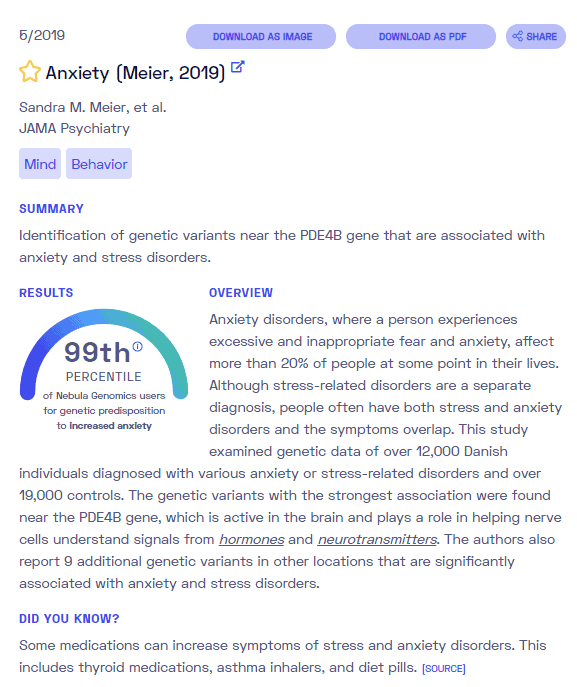
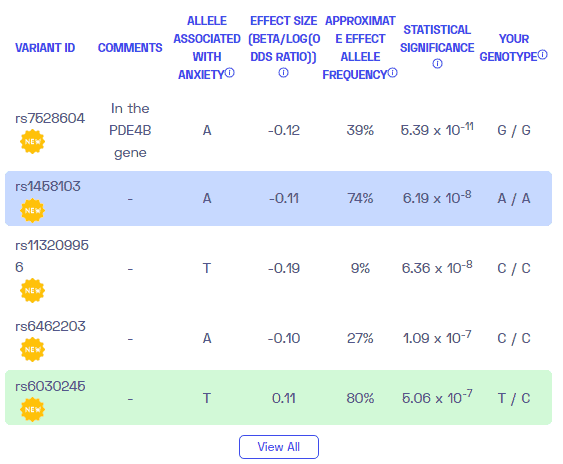
| This information has been updated to reflect recent scientific research as of April 2021. |
What is Anxiety?
Fear and anxiety (or anxiety disorder – AD) are different reactions.
Fear is a necessary and normal emotion whose developmental origin lies in a protective fight-or-flight reaction.
On the other hand, anxiety is a health condition. AD is a term for mental disorders associated with excessive, exaggerated fear reactions in the absence of a real external threat. While most people experience some tense situations in their lives, people with ADs experience the kind that does not go away and can worsen over time. The symptoms can interfere with daily activities such as work, school, and relationships.
There are three primary forms of this condition:
- Generalized anxiety disorder -GAD, in which diffuse, nonspecific fears occur spontaneously and randomly and have no situation or object as a trigger.
- A panic disorder that brings on panic attacks and sudden periods of intense fear.
- Phobias that focus on tangible things and are tied to specific triggering objects, situations, or spaces (e.g., animals, people, or lack of space).
it should be noted that this article is for informational purposes only and not intended to provide medical advice, diagnosis, or treatment. Please contact a health care professional to discuss your health needs.
Is Anxiety Genetic?
There is evidence that genetic factors play a role in the risk of developing anxiety. Family and twin studies showed that about 30% of anxiety cases run in families. Genetic studies on anxiety provided diverse evidence for the involvement of gene abnormalities in the serotonin, dopamine, norepinephrine, and epinephrine neurotransmitters, specifically genetic risks associated with the genes 5-HTT, 5-HT1A, and MAOA.
5-HTT: 5-HTT is a protein that transports the neurotransmitter serotonin from synaptic spaces into presynaptic neurons. These proteins influence the onset of several psychiatric disorders. Variants of this gene are especially associated with depression, and some variants are even known as the “depression gene.”
5-HT1A: 5-HT1A is a serotonin receptor. Activation of this receptor has been involved in the mechanism of action of anxiolytic, antidepressant, and antipsychotic medications. Activation of 5-HT1A in the pre-synaptic region controls serotonin feedback. Negative feedback from this protein may increase serotonin which may lead to increased anxiety-related behavior.
MAOA: The MAOA gene codes for an enzyme called monoamine oxidase A. This enzyme breaks down the neurotransmitters serotonin, epinephrine, norepinephrine, and dopamine, through oxidation.
Current Research on Genetic Anxiety
There have been several research studies trying to answer the question, “can anxiety be genetic?” A pretty broad 2020 study examined the genetic architecture of this disorder and its connection with other mental illnesses by testing 200,000 participants.
Does anxiety run in families? Two years earlier, the University of Amsterdam investigated its prevalence in parents and siblings of children with AD aged 8-18. The study concluded, among other things, that there was a risk in families with children suffering from AD. The study had several variables, but it does answer the question, “can anxiety be genetic?”
Being a psychiatric condition, the pandemic’s effect on people suffering from anxiety cannot be overlooked.
A more recent study established a comparison between the effects of the pandemic on people with and without anxiety. Although the impact of the COVID-19 pandemic on mental health is not clear, as the article states, it does have some insightful findings.
You should also look at this editorial with insights on the future for AD and related conditions.
Epidemiology
ADs are generally widespread. Prevalence ranges between 13.6% and 28.8% in Western countries. Comorbidity is high: three out of four people who experience the condition also experience at least one other mental illness in their lifetime.
In 2007, the National Institute of Mental Health reported an estimated 19.1% of all U.S. adults reported an anxiety issue in that year.
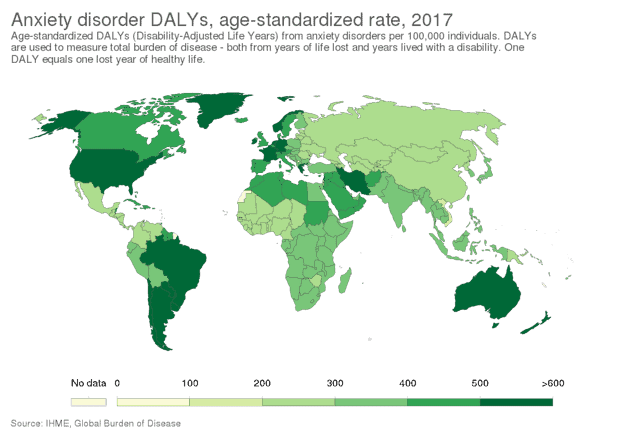
According to Mental Health America, more than half a million people reported, on their online tool, signs of depression and anxiety between January and September 2020. MHA screens for the disease increased 634% during that time.
Symptoms
General symptoms of a person with anxiety disorders include:
- Headaches and chronic pain
- Palpitations and pulse acceleration
- Dizziness, sweating
- Tremor or shaking
- Dry mouth, flushing
- Difficulty speaking, plus difficulty breathing, feeling of tightness or chest pain
- Nausea, vomiting, or diarrhea
- Insomnia
- Disturbances of consciousness, for example, the feeling of going crazy
- Feeling that things are unreal or that you are “not really there”
- Feeling that one no longer has control over one’s thoughts
- Drowsiness, fear of dying, general feeling of annihilation
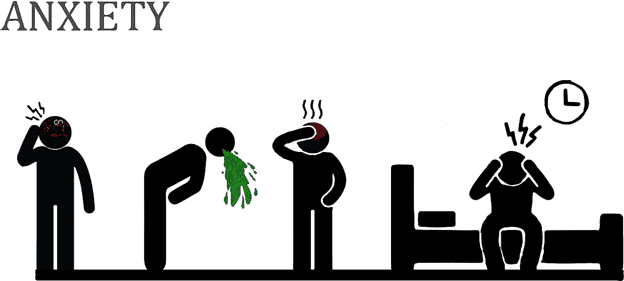
ADs have high comorbidity – with each other and with depression, substance abuse disorders, and poor quality of life.
There are several types of anxiety.
Generalized anxiety disorders
Generalized ADs include persistent symptoms that are also not limited to specific situations. A person may experience hypersensitivity, shivering, muscle tension, sweating, sluggishness, palpitations, hyperventilation, difficulty swallowing, dizziness, upper abdominal distress, unrest, difficulty concentrating, irritation, and difficulty falling asleep due to persistent worry. These symptoms are constant most days and cause problems with performing daily activities.
Sufferers often do not know the trigger of their anxiety. For example, they may be tormented by the fear that they or their relatives might fall ill or suffer accidents.
Panic disorder
People who experience a panic attack may feel:
- Heart palpitations, pounding heartbeats, or accelerated heart rate
- Sweating
- Shivering or shaking
- Sensations of breath shortness, smothering, or choking
- Feelings of imminent doom
- Feelings of being out of control
People may become obsessed over avoiding panic attacks and make changes to their lives that involve removing triggers for such attacks. Worry over and effort to prevent panic attacks can exacerbate the illness.
Phobias
In specific phobias, the condition is formed in reaction to a particular object, situation, or place. There is significant emotional distress from the anxiety symptoms. The anxiety-provoking things or problems are avoided. At the same time, there is an understanding that the fears are exaggerated or unreasonable.
There are very many possible phobias, as phobic reactions can be directed at virtually anything. Some better known specific phobias are:
- Fear of spiders (arachnophobia).
- Fear of dogs (kynophobia)
- Fears of blood (blood phobia, hematophobia)
- Fears of confined spaces (claustrophobia)
- Fears of high altitudes (acrophobia)
- Fear of flying (fear of flying, aviophobia)
- Fear of urinating in public toilets (paruresis); see also below under “Social phobia.”
- Fear of the dentist (dental phobia)
- Fear of dark rooms (achluophobia)
Other classifications of anxiety include agoraphobia, anxiety disorder due to a medical condition, selective mutism, separation anxiety disorder, social anxiety disorder or fear of social interactions (social phobia), and substance-induced.
Causes
As with most mental disorders, there is as yet no conclusive knowledge about the causes. At present, many causatives or triggering factors are assumed, which in combination cause the actual onset of a disorder.
Is anxiety genetic or hereditary?
A combination of genetic predisposition and environmental factors is thought to contribute to the variety of triggers that cause it.
Neuroanatomy
A 2014 study showed that people with anxiety disorder displayed aberrant activity in the prefrontal cortex and amygdala and decreased signaling between these areas. At the same time, the volume of both regions was increased, but the anatomical connections between them were decreased.
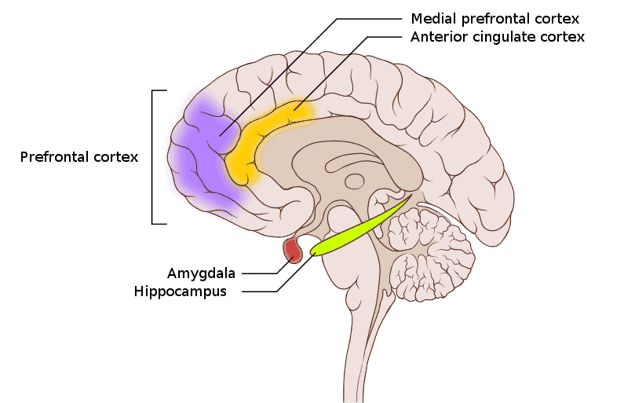
In social phobia, treatment successes, regardless of the type of therapy, showed changes in activity and signaling traffic of the amygdala toward normalization in social situations.
Neurochemistry
The brain chemistry of ADs primarily involves the following neurotransmitter systems:
- Serotonin
- Norepinephrine
- Dopamine
- GABA
- various neuropeptides
- glutamate
- Thyroid dysfunction
There is also evidence that both hyper– and hypothyroidism of the thyroid gland may be associated in rare cases.
According to Mayo Clinic, medical causes and certain life events are also risk factors for anxiety.
Medical causes
Examples of medical problems that can be linked to the condition include:
- Heart disease
- Diabetes
- Thyroid problems, such as hyperthyroidism
- Respiratory disorders, such as chronic obstructive pulmonary disease (COPD) and asthma
- Drug misuse or withdrawal
- Withdrawal from alcohol, anti-anxiety medications (benzodiazepines), or other medications
- Chronic pain or irritable bowel syndrome
- Rare tumors that produce certain fight-or-flight hormones
Sometimes anxiety can be a side effect of certain medications.
It’s more probable that the disease is linked to a medical cause if you don’t have family members with the disorder or personal history.
Other factors
These factors may increase your risk of developing an anxiety disorder:
- Traumatic events or life experiences
- Stress due to an illness
- Stress and anxiety buildup
- A generally stressful life
- Personality
- Other mental health conditions
- Family history
- Drugs or alcohol
Diagnosis
If medical conditions are ruled out as the cause for anxiety symptoms, a medical provider may refer a patient to a psychiatrist specializing in diagnosing and treating mental disorders.
The focus of diagnosis is a psychological evaluation. This often involves discussing thoughts, feelings, and behavior. Some psychiatrists compare your symptoms with diagnosis criteria from the Diagnostic and Statistical Manual of Mental Disorders (DSM-5). Based on the evaluation, the psychiatrist can make an initial diagnosis.
The following criteria are indicative of an AD:
- It is recognizably inappropriate to the situation.
- The corresponding reactions last significantly longer than necessary.
- The particular type can neither be explained, influenced, nor managed by the affected person.
- The fears lead to clear impairments of the life of the affected person.
- The fears restrict contact with strangers.
Symptom scale questionnaires such as the Hamilton Anxiety Scale (HA-MA) are used to conduct severity assessments.
Children with anxiety are diagnosed when they do not outgrow the typical fears and worries in young children or when fear begins to interfere with daily activities. Symptoms in children often cause irritability and anger that may go undiagnosed until later in life.
Treatment
It is most often treated with either cognitive behavioral therapy (CBT), medications, or a combination of both. To counteract the sensation of loneliness, a support group can be of help. Often, early intervention provides the best outcomes.
Cognitive Behavioral Therapy
CBT teaches people different ways of thinking, behaving, and reacting to triggering and fearful objects and situations. Either cognitive or exposure therapy can be used in this sense. Mental health professionals use cognitive therapy to help identify and neutralize thoughts that are causing anxiety, while exposure therapy helps people confront fears that are driving anxiety.
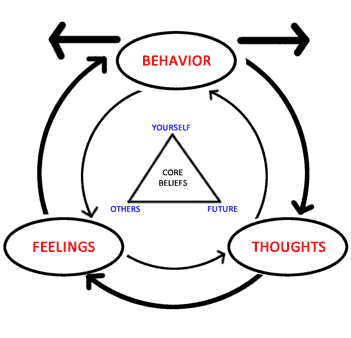
Medication
Medications can help relieve the symptoms. The most commonly used prescription drugs to combat this disorder are anti-anxiety drugs (the most prominent being benzodiazepines), antidepressants, and beta-blockers.
Anti-anxiety drugs: These are usually the first-line treatment. They tend to work quicker than the other options. However, people can build up a tolerance to these medications, meaning that they will eventually have to take higher doses.
Because of this drawback, medical providers often prescribe benzodiazepines for short periods and take people off the medication slowly to avoid withdrawal symptoms.
Antidepressants: These medications, such as selective serotonin reuptake inhibitors (SSRIs) and serotonin-norepinephrine reuptake inhibitors (SNRIs), may help improve the way your brain uses certain chemicals that control mood or stress and make you feel anxious. However, it may take a while to find the one that works best. Additionally, it takes longer for these medications to work.
Beta-blockers: Although beta-blockers are most often used to treat high blood pressure, they can also help relieve physical symptoms of anxiety, such as rapid heartbeat, shaking, trembling, and blushing. These medications are also used for short periods and in “as needed” cases.
Prevention
Several recommended approaches help reduce symptoms and improve the quality of life for those living with anxiety.
- Get help early
- Stay active
- Avoid alcohol or drug use. Their use can cause or worsen anxiety.
If you liked this article, you should check out our other posts in the Nebula Research Library, including some on other behavior conditions like Tourettes. You may also be interested in medication reviews such as for the antidepressants Lexapro and Zoloft.
June 23, 2022
